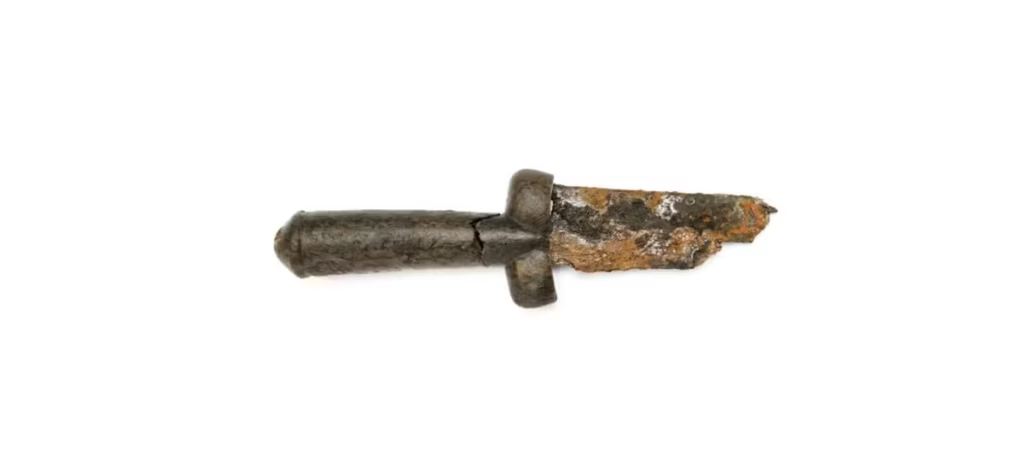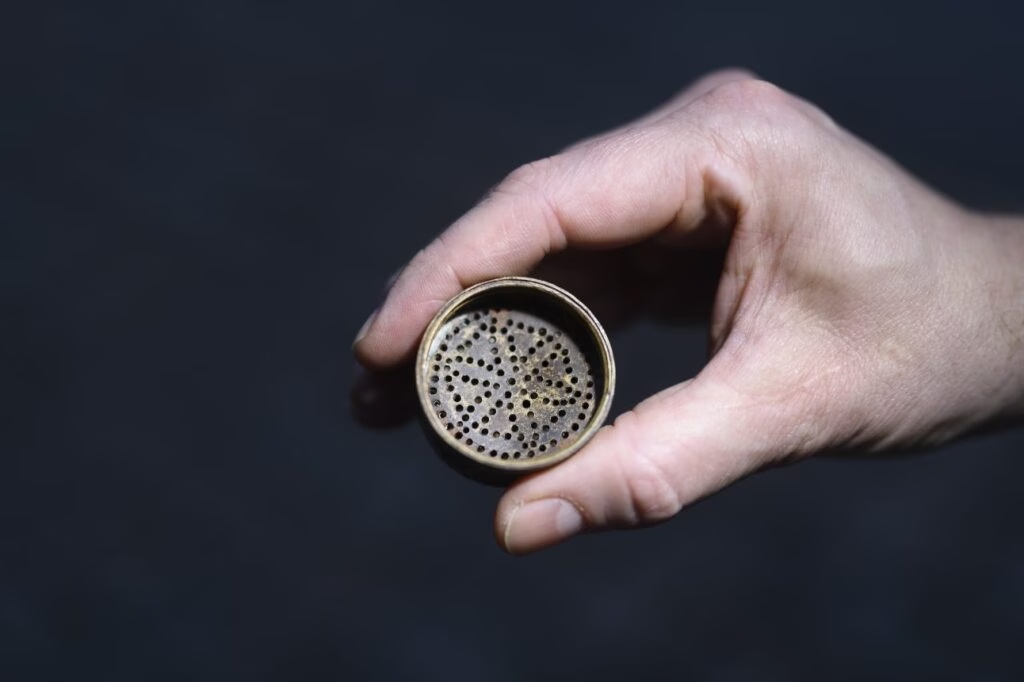Gothenburg, Sweden — A unique 15th-century dagger featuring a distinctly phallic hilt has been discovered during archaeological excavations at the historic Gullberg Fortress. Nicknamed the “testicle dagger” for its anatomical design, the weapon offers rare insight into medieval warfare, symbolism, and craftsmanship.
The discovery was made as part of a decade-long excavation campaign (2014–2023) tied to a railway construction project. Located at the mouth of the Göta River, Gullberg Fortress played a pivotal role in Sweden’s medieval military defense, serving as a gateway to the North Sea.
A Rare Glimpse into Medieval Weapon Design
The dagger features an iron blade and a curved birchwood handle decorated with circular motifs. The hilt includes two rounded shapes resembling testicles, a stylistic element common in certain late-medieval weapons believed to enhance grip and perhaps carry symbolic or even provocative meaning.

Archaeologists found the dagger in the same stratigraphic layer as crossbow bolts, suggesting the weapon saw use in combat. Though the tip is broken and the blade edges chipped, the find remains remarkably well-preserved given its age.
Strategic Importance of Gullberg Fortress
Constructed in the 14th century, Gullberg Fortress stood atop a strategic hill overseeing Sweden’s only direct access to the North Sea at a time when the country’s western coastline was dominated by Denmark-Norway. The site predated the founding of modern Gothenburg (1621) and once protected the bustling Viking-era trading town of Lödöse.
The fortress endured multiple sieges and reconstructions from the 14th to 17th centuries before its final destruction by Danish forces in 1612. Historical accounts, including that of 10-year-old Cecilia Krakow, who witnessed the Danish assault, provide vivid narratives of these turbulent times.
Traces of Daily Life Beneath the Ruins
In addition to weaponry, archaeologists uncovered objects from daily medieval life. A 16th-century tower foundation revealed a basement room with walls nearly four meters thick. Inside were beer barrel taps, a sand sprinkler used for blotting ink, and a well-preserved limestone sundial—missing only its gnomon.

Other discoveries include locally made and imported ceramics, musket and cannonballs produced within the fortress, and wooden structures dated to the 1460s and 1570s. These findings illustrate a fortified community that balanced military readiness with domestic life.
On Display: A Medieval World Reimagined
Artifacts from the Gullberg Fortress excavations, including the now-famous testicle dagger, are currently showcased at the Swedish History Museum in Stockholm as part of the “Current Archaeology” exhibition, open through January 2026. The exhibit offers visitors a rare opportunity to explore the material culture of a dynamic, war-torn, yet resilient medieval settlement.
Cover Image Credit: Arkeologerna/SHM





